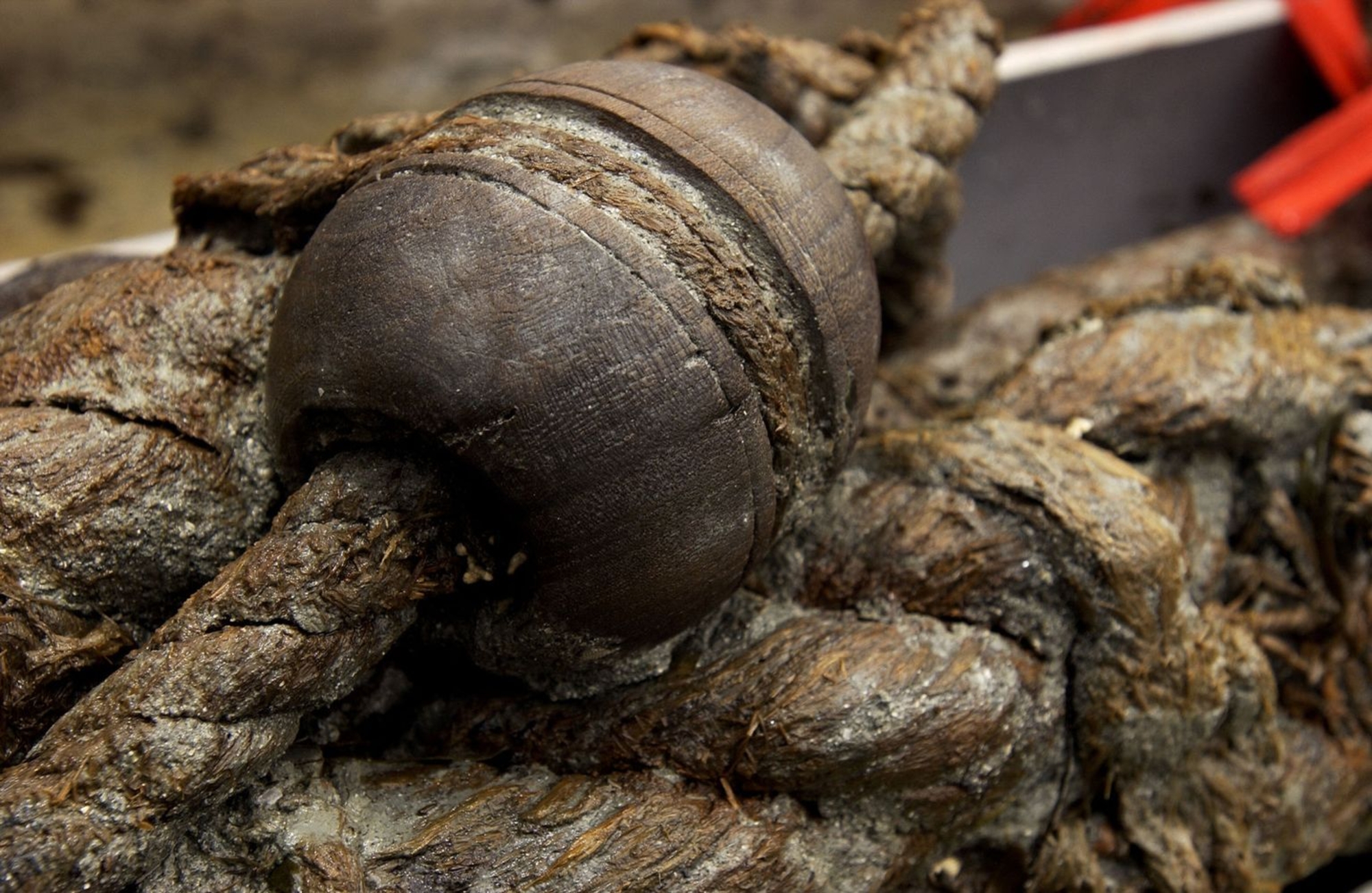
- Home
- Shipbuilding
- Rigging for the two ships
- A forest of ropes
In-situ investigations frequently turned up nests of ropes, the remains of countless hawsers, cables, gaskets and other lines used on board. As Damien Sanders – archaeologist member of the team and author of a pioneering study of ropes – likes to point out, these 'soft' elements of the rigging, as opposed to 'hard' items like blocks, are among the most difficult to excavate and interpret. And yet, they played an essential and completely distinct role aboard ship.
Every rope had a replacement, stowed in the hold: slender gaskets knotted to a pail or holding up a hammock, coils of hawsers waiting in the spars, and cables used for mooring. The way ropes were prepared (tarring, worming, parcelling and serving), repaired, spliced and knotted provide valuable evidence about the technical know-how of the roperies that produced them and the sailors that used them.
Worn ropes were never discarded, however. They were unravelled and rewoven into mats or fenders for protecting the outside of the hull.








